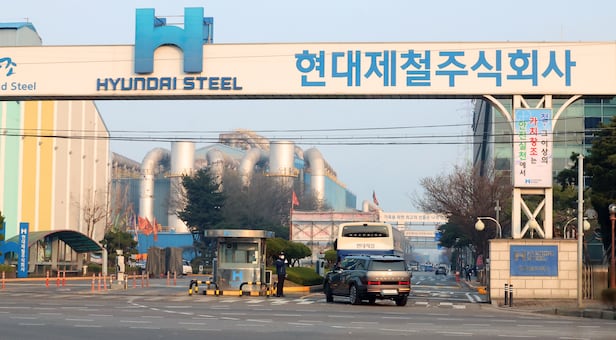
Hyundai Steel, South Korea’s second-largest steelmaker, reached a tentative agreement with its labor union on Apr. 10 after a protracted seven-month standoff over wage and collective bargaining negotiations. The breakthrough came after 17 failed rounds of talks since September of last year.
Over the course of the deadlock, Hyundai Steel declared an emergency management plan for the first time in its history, which included a companywide lockout and a 20% salary cut for all executives. During this period, the company also faced mounting external pressures—most notably a 25% tariff imposed by the administration of U.S. President Donald Trump, as well as continued anti-dumping challenges against low-cost Chinese steel flooding global markets.
At the center of the dispute was the issue of performance-based bonuses. Despite posting a net loss of 65 billion won (approximately $45 million) last year, Hyundai Steel had proposed an average bonus of 26.5 million won per employee, consisting of 450% of base salary plus a lump sum of 10 million won. However, the union, affiliated with the Korean Confederation of Trade Unions (KCTU), demanded additional compensation and staged rolling, guerrilla-style strikes.
Amid deteriorating market conditions and production disruptions caused by labor unrest, analysts now forecast the company will post a first-quarter loss of over 60 billion won ($41 million).
The most recent round of negotiations on Apr. 9 played out against the backdrop of an imminent strike threat. The union had warned of an all-out walkout if talks collapsed. A marathon session that lasted roughly 11 hours into the early hours of the following day resulted in a compromise: the union secured an additional 500,000 won in bonuses, raising the total average payout to 27 million won per employee, or 450% of base salary plus 10.5 million won. The company’s proposed monthly base pay increase of 100,000 won was also revised slightly upward to 101,000 won.
These concessions come after months of industrial action, emergency cost-cutting measures, and looming financial losses. While a tentative deal has been reached, the agreement still requires ratification through a vote by union members across five local chapters, scheduled for Apr. 11–12. Should the vote fail, negotiations would return to square one.
Industry observers say it remains difficult to predict how the vote will play out, reflecting the tense and uncertain atmosphere surrounding the dispute. Many in the steel sector are hoping that both labor and management will now move beyond the conflict and work together to overcome the current crisis.


